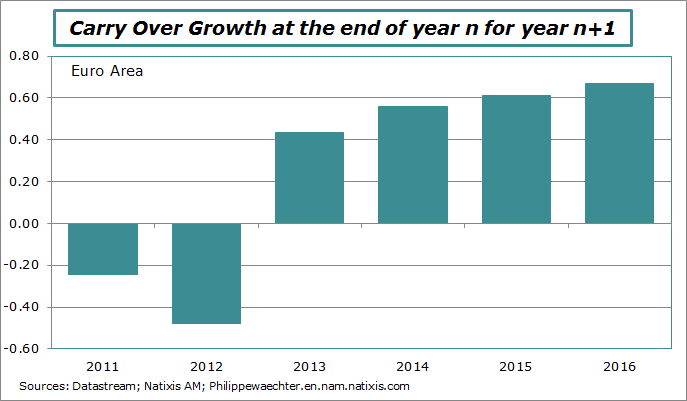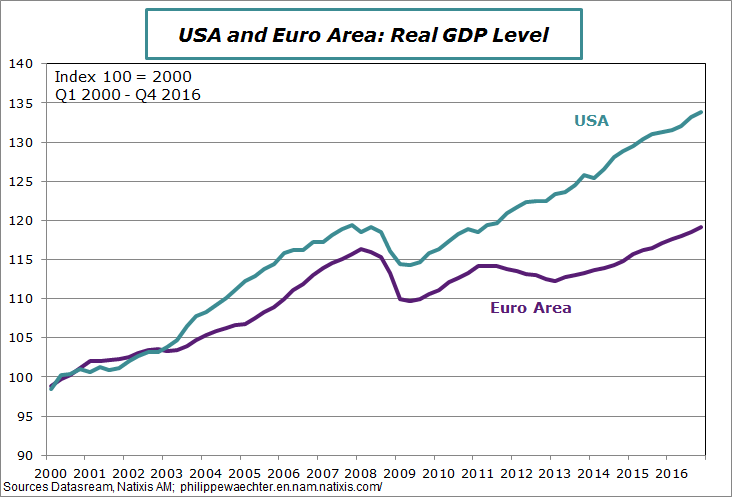The GDP growth momentum was stronger at the end of 2016. The GDP growth rate was at 2% (annual rate) for the last three months after 1.75% for the third quarter.
For 2016, the GDP growth was on average at 1.7% after 1.9% in 2015. The carry over growth at the end of 2016 for 2017 is positive at 0.7%. It is the highest figure since 2010. It means that the new year is starting well. The 0.7% means that with GDP growth at 0% for every quarter of 2017, the average growth rate for 2017 would be 0.7%. We see that in 2011 (for 2012) and 2012 (for 2013) the carry over was negative. It was almost impossible to catch up and to converge to a positive growth. This was the impact of austerity policies in the Euro Area.
The impact of these policies can be seen by comparing GDP growth in the US and in the Euro Area from 2011 to 2016.
The starting point is that in 2011 growth had the same magnitude on both side of the Atlantic at 1.6%. Austerity policies (fiscal and monetary) in the Euro Area in 2011 and 2012 have pushed growth in negative territory in 2012 and 2013. During this period there was a mild recovery in the US. The catch up process has been long for the Euro Area but in 2016 GDP growth in Europe is above the US figure (1.7% vs 1.6%)
But the kind of sudden stop due to austerity policies has had a strong and persistent negative effect on the Euro Area GDP profile. The parallel, seen from 2000 to 2010 in the last graph, no longer exists after 2011. The divergence is spectacular. And it has had a huge cost in terms of employment and revenues. One day, we will have to look at responsibility for that.
For 2017, the carry over is high and surveys show a strong momentum at the end of 2016 and at the beginning of 2017 (see here my analysis in French). This means that GDP could go above the consensus of 1.6%-1.7% for 2017 and could converge to 2%. The reason for that: companies surveys in the manufacturing sector are very strong and consistent one with each other. Flows of orders are strong and this means that trade between Euro Area countries will intensify. In the past, this type of situation was the source of a stronger momentum. We saw these episodes at the end of the 80’s and of the 90’s. GDP growth, at these moments, was above 3.5%. We don’t expect such a high growth rate but 2% is reachable.

Philippe Waechter's blog My french blog




